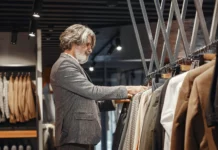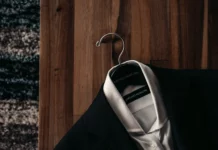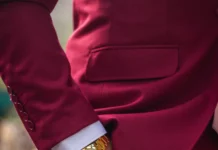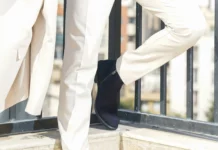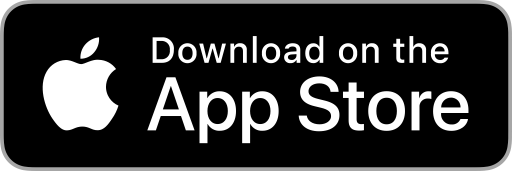The business casual dress code is the perfect combination of comfort and formality when going to work. Here’s our guide on how to achieve the look.
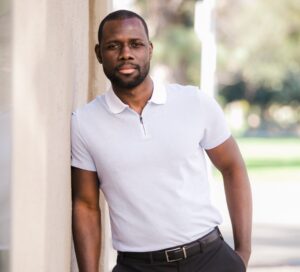 On a first glance, the words “business” and “casual” seem like total opposites. But when it comes to fashion, they complement each other. The business casual dress code has become a standard guide among office workers: it combines the formality of business wear with a laid back twist.
On a first glance, the words “business” and “casual” seem like total opposites. But when it comes to fashion, they complement each other. The business casual dress code has become a standard guide among office workers: it combines the formality of business wear with a laid back twist.
It stands far away from the structured business suit, focusing on tailored, modern clothing that still looks professional, but less stiff. Actually, wearing a suit with sneakers could easily be part of the business casual dress code.
In fact, there are different ways to approach this dress code, which makes it very practical for the work environment as you can regulate how formal or casual you want to look.
Each workplace has its own set of rules: some offices welcome a suit with sneakers and no tie, while others encourage polo shirts, chino pants and leather Oxford shoes. The business casual dress code merges professionalism with comfort.
How to style a business casual look
The business casual dress code combines smart and relaxed clothes. If we were to make a list, this is what it would look like:
- Unstructured blazer
- Oxford shirt
- Polo shirt
- Drawstring pants
- Leather sneakers
- Derby shoes
For example, when it comes to bottoms, you can opt for elasticated or drawstring trousers instead of your regular dress pants. They look like the more professional version of sweatpants: they are stylish, they look sharp and they are still very comfortable.
You can wear them with a light blue chambray shirt or a slim fit polo shirt along with Derby shoes. Moreover, nowadays you can even find matching sets of drawstring pants and unstructured blazers, which you can style with leather sneakers and a basic white t-shirt.
In other words, with this type of dress code, think of swapping your formalwear for more casual items. In fact, once you get used to wearing separates, a full suit look will feel quite odd. Opting for separate smart tailored pieces in the same tones is a creative, easy way to conquer this style.
Another casual alternative to dress pants are a pair of chinos. Even denim pants are an option if you paired them with more formal pieces, such as a white shirt and a structured blazer.
In fact, in this article you’ll find how to wear a blazer and jeans with style. This has been an iconic style in the business casual world for a very long time.
It is all a matter of combining formal with casual pieces. If you chose laid back pants, then you should opt for a traditionally formal shirt (and blazer) for your upper half. The other way around, if you decide to wear a slim fit polo shirt, then your best choice for your bottom are tailored pants, such as chinos. It’s all about balance.
Swap your formal jacket
On a similar note, the business casual dress code allows you to wear a suit jacket. However, it also means you can opt for other less formal alternatives. To name a few, you can opt for Harrington styles, bombers and field jackets, unstructured blazers, knitted jackets and shawl collar cardigans as well.
Lightweight jackets like these can be matched with a light blue Oxford shirt, a dark gray tie and black leather dress sneakers. This is a classic, smart outfit that will look great in any workplace. It might be helpful to take a look at these men’s casual shirt styles too.
Regarding footwear, when it comes to business casual, you can also try a pair of Desert boots or loafers instead.
The best colors for business casual
Because it’s still a dress code often used in the work environment, colors play an important role. Neutral shades are always a safe bet: shades of blue, gray, white and brown are your top choice.
You can combine these neutral pieces with prints and patterns, but always with caution. You don’t want to overdo it and look unprofessional.
If you want to incorporate prints to your business casual look, then plaid pants are a great start. Match them with a white shirt, blazer and a pair of Chelsea boots and you’ve got the ultimate laid back business look. For more insights on this, take a look on how to style plaid pants.
Tailored pieces are often found in the same neutral shades: blue, black and gray. But the business casual dress code allows you to be more playful and open-minded.
For instance, you can try bolder colors, in earthy shades of green and brown. For example, think of a beige two-piece set, which you can combine with more casual pieces to contrast the formality of the suit, like a basic shirt or turtleneck.
Your best complement
A lot of jobs require you to carry your belongings around on a daily basis, from documents to your laptop. For this purpose, it is convenient that you add a bag to your look.
This accessory is often overlooked and not many guys pay attention to it. However, this is actually a very stylish way to elevate your look and to make your everyday journey much easier.
There are numerous styles that you can choose from nowadays, yet 一speaking of the business casual dress code一 tote bags, leather satchel bags and cross body bags are the most common ones. Briefcases are always an option, but they don’t match that laid back feel as well as the other styles.
In order to match the professionalism of the business environment, try opting for minimalist brown or black leather bags that provide a sense of sophistication. Speaking of which, here’s what every man needs to know about bags.
Accessories that you might want to avoid in this case are pocket squares, belts, cufflinks, suspenders and even certain styles of ties. These options are way too formal for this style. With the business casual dress code: the less, the better.

